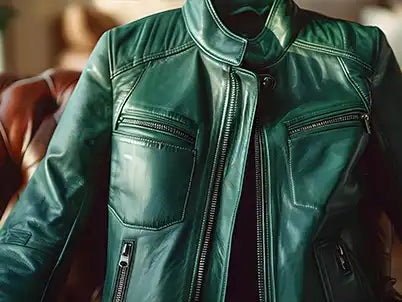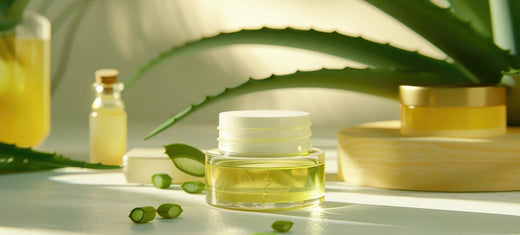DIY leather conditioner is the homemade solution used to clean leather articles and ensures timeless elegance in the best possible manner. Leather possesses some sort of allure as to how it commands our adoration and improves the appearance of our apparel – classic yet edgy. We head over heels for these pieces, from a classic leather jacket that tells people you mean business and is not easy to mess with to the more refined and chic essence of leather accessories. You must understand that leather is a very durable material that needs a lot of care but is easy to maintain; however, if you want to keep it looking as timeless as brand new.
Caring for leather and treating it as necessary in leather conditioning is very demanding. Many ponder, ‘Which showcase can I use to soften my jacket or accessories?’ It is not enough to condition it once a year, perhaps when you decide to take your jacket for dry cleaning.
It may surprise you that professional leather care services are offered, but top-notch leather conditioners can be prepared using products from home. Yes, you can do it—there are hundreds of ways to treat leather at home, and you probably have most of the materials in your house right now. It's simpler than you think.
At AU LeatherX, we want to help you learn how to make your own leather conditioners with stuff you already have. However, many of these homemade remedies are effective, inexpensive, and quick to prepare for serving your particular needs. You are all set to give your leather items the ultimate care they need without breaking the bank or securing frequent trips to the cleaner.
Unleash the outstanding DIY leather conditioners you can make home to maintain your leather items. Read on as we show you how to extend the lifespan of your favorite leather accessories. Connect with us, as we want to tell you about the miracles of homemade leather conditioners.
Leather Types and Conditioning Requirements
When we begin the quest for do-it-yourself care for leather products, we must first familiarise ourselves with the material. Leather is best imagined as a living material that needs some understanding and care to look as stunning as possible. To look after them adequately, they must respect leather, what it is, and what it requires. Leather is unlike any fabric created and can be used to order; it is a natural, unique product. It has life movement and even grows old in its rhythm, so it requires slightly more effort than a traditional material. Learning about its care and preservation requirements, including the amount of moisture it needs, the type of cleaners to be used, and others, will help preserve its appealing look and strength. So, let’s reach the mentioned aims together, learn the secrets of using the leather conditioner DIY, and make your new belongings very durable. Learning more about the distinctions of leather will make the process even more fascinating and guarantee that your leather accessories will last long. One can take leather products as far as possible by caring for them. Join us and learn about household leather conditioners and how to treat cherished leather belongings as they are meant to be treated. Come with us and check out household leather conditioner facts, and find out how you can treat your beloved leather items as they are meant to be treated.
1.Full-grain Leather:
This finest leather is the top layer, where you can see all the natural marks and textures. Consider this type the pure, unrefined form of leather. Also, It’s robust, long-lasting, and commonly found in luxury articles. Since it’s natural, it needs moisture to look elegant and classy. However, full-grain leather is easy to clean; any leather conditioner alternatives can ensure its timelessness and make it as brand new as you shop.


2.Top-grain Leather:
If full-grain leather undergoes quality spa treatment and light buffing, it will become top-grain leather. This kind is sanded yet polished, giving the article a smoother finish. While it might lack full-grain leather's raw, rugged persona, it’s still quite durable. Speaking of the top-grain leather conditioning, it helps keep its sleek outlook while ensuring it remains stable for years.
3.A Split or Suede Leather:
Have you ever felt the inner layer of a leather hide? It’s incredibly soft, right? That’s where suede or nubuck is composed to ensure chicness and coziness. These leathers have a smooth, fuzzy texture and are more delicate, so they need a gentle conditioning approach. However, they might need additional care, but the softness is worth it. v


4.Bonded Leather:
Think of all the leather scraps combined and stuck as bonded leather. It's the most budget-friendly alternative craft from leftover leather pieces fused. Even though it’s more affordable, it still needs some TLC to keep it looking fresh and elegant. Regarding its maintenance, you can keep using the best leather softener to satisfy the touch and feel.
What Is The Best Conditioner For Leather?
You can choose the best leather conditioner depending on the leather you own as per your prefrence. Out of four exclusive types of leather: full-grain, top-grain, suede, and bonded, find out which DIY leather conditioner suits your needs. Each requires different maintenance to ensure your particular is timeless and new for many years. After discussing the best conditioners for each leather type, you can select the one that suits your item. Opt your leather’s condition, the product’s benefits, and how it fits into your care routine to ensure your leather remains top-notch.
1. Coconut Oil or Lemon Oil - A Must-Add DIY Leather Conditioner:

On the bright side, lemon oil, especially coconut oil, must be added to secure the outstanding maintenance of delicate leather items. Lemon oil is safe and effective, while coconut oil is hypoallergenic, making it a gentle option that won’t harm your leather exterior, such as color and texture. Use lemon, coconut, or a mix of both for the best leather softener. After cleaning your leather, gently rub the surface with a cloth soaked in the oil solution. This matchless amalgam leaves a refreshing fragrance, helps prevent cracking, and keeps your leather looking smooth and new.
2. Usage of Olive Oil is One-of-a-Kind:

Oil-based conditioners like olive oil often spark debate for cleaning purposes. Some consider them excellent leather conditioner alternatives, and many DIY remedies include them and vinegar. However, you may consider professional cleaners frequently recommend against using olive oil. They accept that these oil-based conditioners can do more harm than good, potentially damaging your leather over time. Moreover, olive oil might seem convenient, but it is best to measure its pros and cons before applying it to your delicate leather items.
3 The Combo of Flaxseed Oil, Petroleum Jelly and Coconut Oil:

Flaxseed oil is a fantastic leather conditioner DIY. Like coconut oil, it's hypoallergenic, making it a great natural way to keep your article in shape. Besides, coconut oil is particularly effective for leather furniture, while flaxseed oil works well, too. Another surprising alternative is petroleum jelly, highly considered for conditioning leather. If you unleash multiple ways to care for your leather items, flaxseed oil and petroleum jelly are worth considering.
4. Beeswax-Based Conditioner:

A beeswax-based leather conditioner is an excellent option. Although it requires some preparation, believe it or not, the results are well worth it. This conditioner is a state-of-the-art substitute and makes your jacket look classy and comfortable.
How to Use:
Follow these simple three steps letting you know how to make leather conditioner, and your beeswax-based leather conditioner is ready:
- Combine beeswax with cocoa butter and almond oil, then cook in a saucepan with a 1-1/2 ratio.
- Heat the delicate solution on medium until the solid fats melt into the oil, but do not overheat. Once melted, remove from heat and let it come on room temperature for about 30-40 minutes.
- The final product will be a thick balm. Apply this balm to your leather items through your fingers, rub it well, and gently wipe away any excess with a soft cloth.
5.Baby Soap Based Solution:

If you have no leather conditioner at hand, what can you use? Unlike many homemade recipes with conventional soap, which is not ideal, natural baby soap falls into a different category. Combined with the fact that there are no color additives in the compound and that it is exceptionally gentle and mild, the product is entirely safe to use. Natural baby soap is very friendly and will handle your leather as it should be while cleaning it, thus avoiding marks on the leather.
How to Use:
Unleash these quick steps that solve your query of how to make a leather conditioner with the delicate addition of baby soap.
- You can use baby soap, which is matchless; warm a quart of water with half a tablespoon of soap and several drops of vinegar.
- Grab a soft cloth and soak it in the mixture, then wipe your leather item with that damp cloth. Let the leather dry naturally for some time, and you will see the end product. It is a fundamental way to keep your leather clean and moisturized.
6.Saddle Soap as a Reliable Option:

Saddle soap was often used as a standard soap for cleaning the leather while moisturizing it to increase flexibility. It works best with old leather goods that have become rigid or used frequently. But wait, if you wish to look for a substitute, many substitutes for saddle soap can be as adequate or even better for you. These have the advantage of being natural, containing different ingredients depending on the type of leather they are meant to be used on, and being more personal.




















